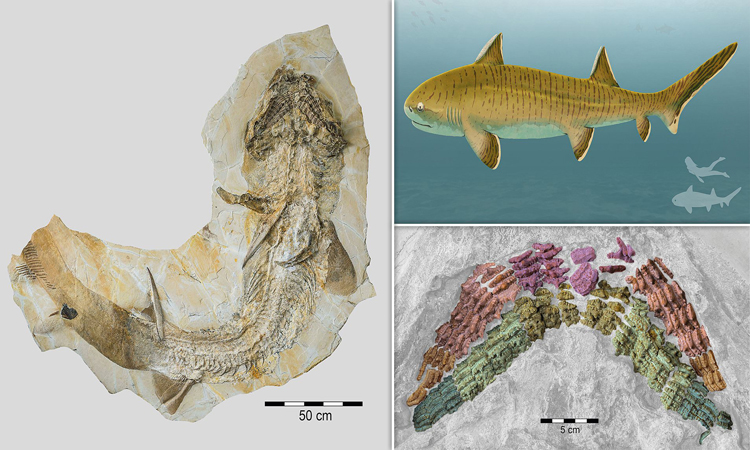The nearly complete fossil of the 2.5m-long Asteracanthus shark provides scientists with a lot of information about this ancient predator.
The team of Sebastian Stumpf, an expert from the University of Vienna, found fossils of ancient Asteracanthus sharks in the limestone of Solnhofen, Bavaria, Cnet reported on January 15. This area of limestone dates back to the late Jurassic, around 150 million years ago.
Sharks are more difficult to store in fossils than dinosaurs because the shark’s frame is actually made of cartilage, not bone. Almost complete Asteracanthus fossils at Solnhofen are rare. This fossil shows the 2.5-meter-long Asteracanthus and was one of the largest types of sharks from the late Jurassic period.
The Solnhofen fossils are completely intact, providing a lot of valuable information to scientists. Naturalist Louis Agassiz described Asteracanthus over 180 years ago from dorsal fossils. However, this is the first fossil whose bones are still connected in order, the team of experts said. The new study was published in the journal Papers in Paleontology.
The teeth of the fossil shark are exceptionally well preserved with over 150 teeth, each with a central tip, flanked by smaller cusps. “This tooth shows that Asteracanthus was an active predator, targeting a wide variety of prey. The Asteracanthus was certainly one of the largest and most impressive cartilaginous fish of the time,” says Stumpf.


